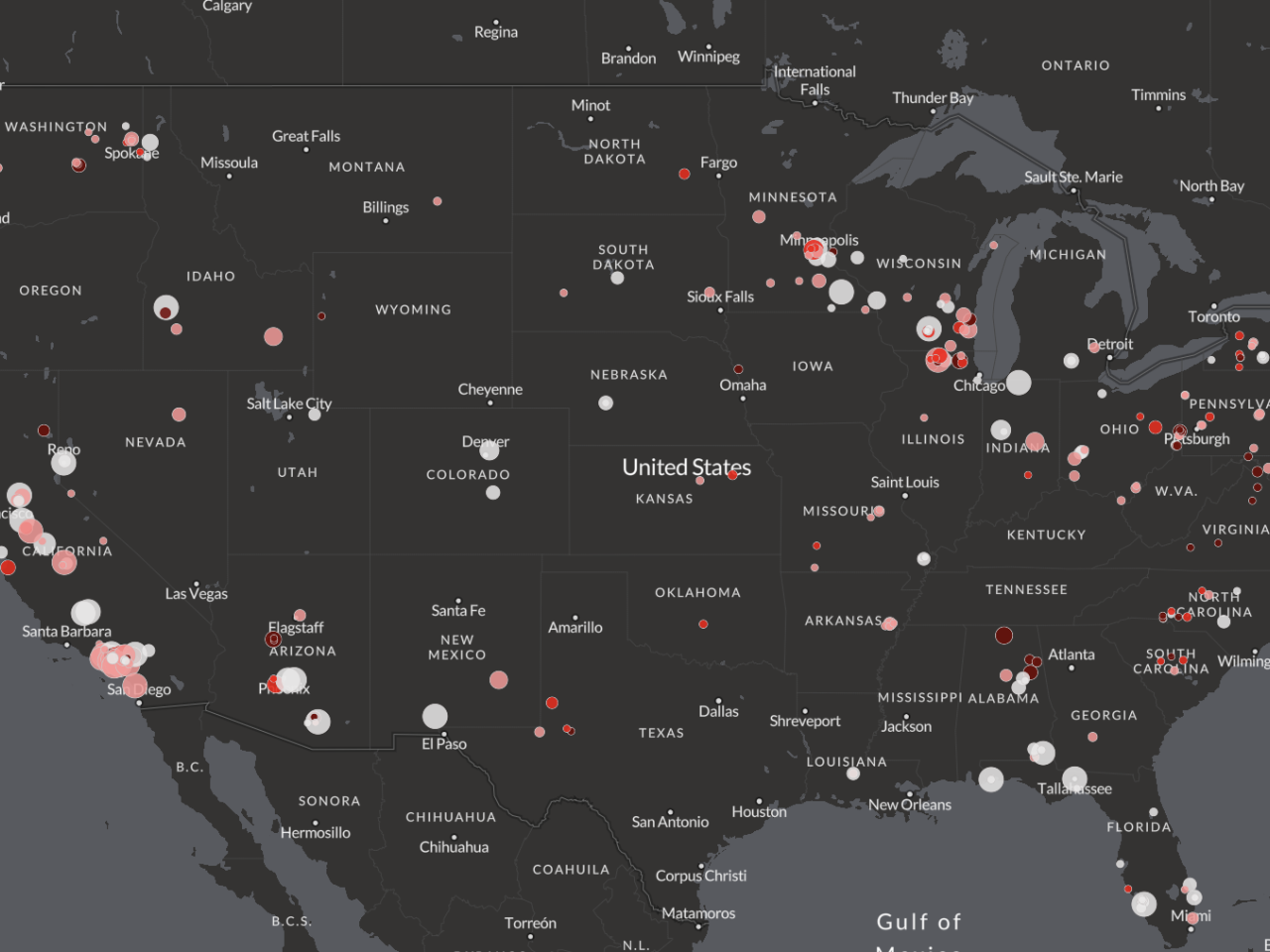WASHINGTON – A new interactive map details where drinking water supplies for more than 19 million Americans are contaminated with trichloroethylene, or TCE – a cancer-causing industrial solvent made notorious by the book and film “A Civil Action.”
The Environmental Working Group’s updated map shows TCE in many locations contaminating tap water often at levels above what scientists say are safe. EWG researchers analyzed federal and state water test data to create the map.
The updated map adds 243 new detections of toxic TCE in drinking water to EWG’s earlier version of the map, released in 2018. The map also shows locations serving 5 million more people since then.
In total, the map now identifies 426 areas affecting U.S. drinking water.
“Too many people are exposed to TCE in their drinking water,” said Tasha Stoiber, Ph.D., a senior scientist at EWG. “Communities across the country have water with potentially harmful levels of this toxic solvent, but many people don’t know about the risk they face when they turn on the tap.
“Concerned families can remove or reduce TCE from their tap water with a carbon-based filter. For households that use private wells, we recommend testing the water for TCE and other contaminants to find out whether water treatment is necessary,” she added.
The federal government is on the verge of banning uses of the carcinogenic industrial chemical. In October, the Environmental Protection Agency proposed a ban on most uses of TCE.
“The Biden EPA is once again putting the health of workers and consumers first by moving to ban most uses of TCE,” said Scott Faber, EWG’s senior vice president for government affairs.
“While some House Republicans sow chaos in Congress, the Biden EPA delivers results,” he said.
Despite being subject to severe funding limits, the Biden EPA has also taken steps to limit exposure to other harmful chemicals, including asbestos and methylene chloride. The agency is soon to address additional toxic chemicals, including 1-4 dioxane.
TCE in drinking water
Consumption of TCE-contaminated water has been linked to leukemia and liver and kidney damage. It has also been linked to birth defects.
It’s long been used for degreasing and cleaning metal parts in factories but has been classified a “human carcinogen” by the EPA since 2011.
In 1987, the EPA passed a maximum contaminant level for TCE in drinking water of 5 parts per billion, or ppb. But legal does not always mean safe.
The Minnesota Department of Health identified a more health-protective level of TCE in drinking water of 0.4 ppb, though it's not legally enforceable. This standard is based on the impact of TCE on the immune system. EWG adopted this level as its health standard, a recommended level based on the best science about when TCE levels in water are considered safe.
“People whose water contains TCE can be exposed not just by drinking it but also by inhaling it while bathing, washing dishes and performing other household activities,” said EWG’s Stoiber.
Health risks
TCE poses health risks through ingestion, inhalation and skin absorption.
Both the International Agency for Research on Cancer and the Department of Health and Human Services have classified TCE as a human carcinogen.
The cancers most commonly linked to TCE are kidney and liver cancer and non-Hodgkin lymphoma.
Exposure to TCE also has been associated with a range of health issues, including various immune and neurological defects. TCE has even been associated with heart malformations in the developing fetus.
“People who work with TCE on a daily basis face the highest exposure risk,” said Stoiber.
“Among others most at risk from the dangers of TCE, especially decreased immune function, are pregnant people, infants and young children,” she added.
Other exposures to TCE
When polluted groundwater or soil releases TCE, the gasses can infiltrate homes, schools or workplaces, leading to indoor air exposure. Individuals may unknowingly inhale these vapors.
More than 400 Superfund sites in the U.S. are contaminated with TCE. For example, TCE for decades poisoned the drinking water at Camp Lejeune, a Marine Corps base in North Carolina, causing various kinds of cancer and Parkinson’s disease in service members and their families. Many Superfund sites are located on or near military bases.
In addition to recognized Superfund sites, there are a large number of hazardous waste sites across the country where TCE may have been used and discharged, such as landfills, former dry cleaners and smaller businesses.
Not all TCE-contaminated sites and contaminated groundwater areas across the nation have been identified or fully assessed, which means some people may live in an area at risk from TCE vapors but don’t know it.
###
The Environmental Working Group is a nonprofit, non-partisan organization that empowers people to live healthier lives in a healthier environment. Through research, advocacy and unique education tools, EWG drives consumer choice and civic action.




